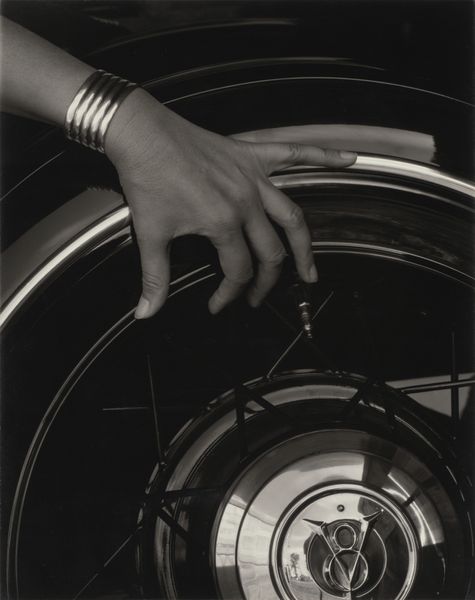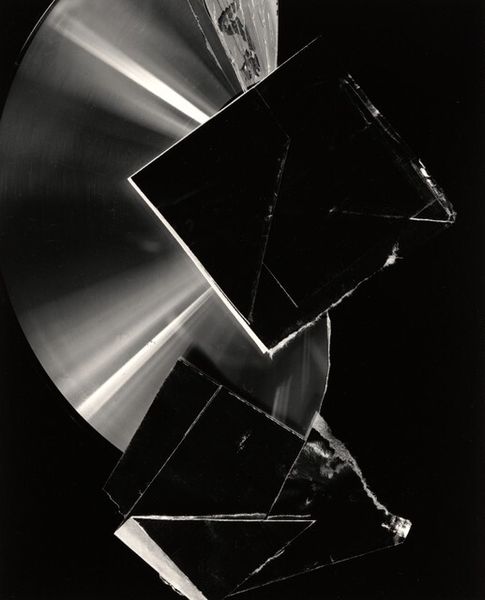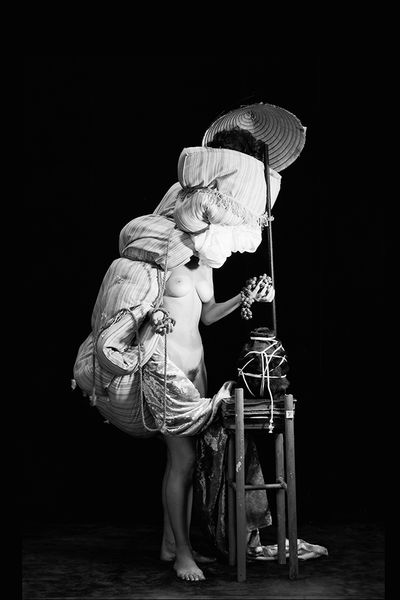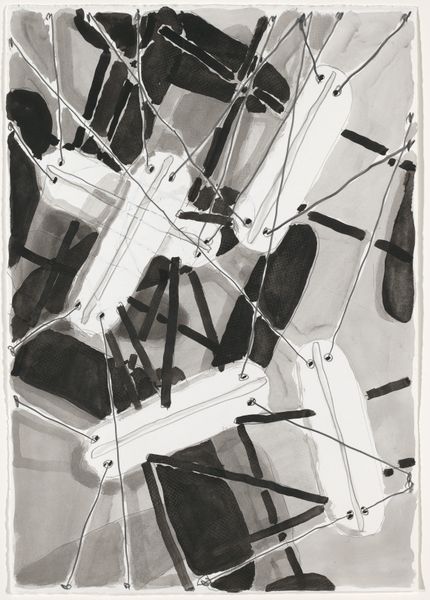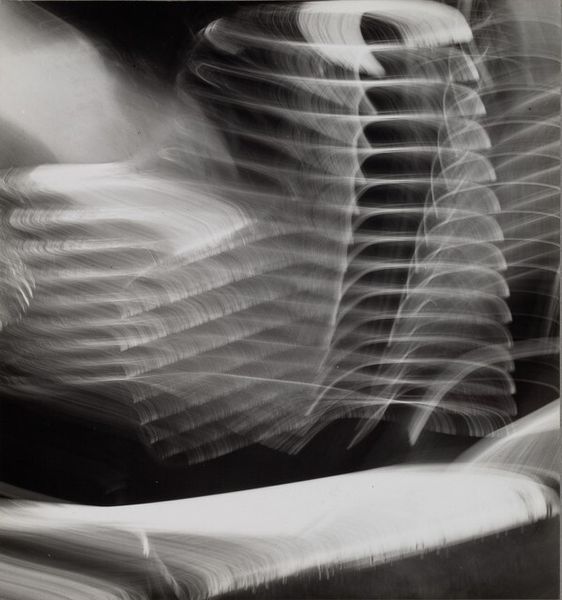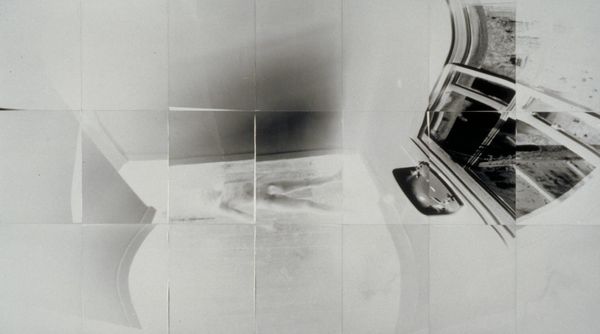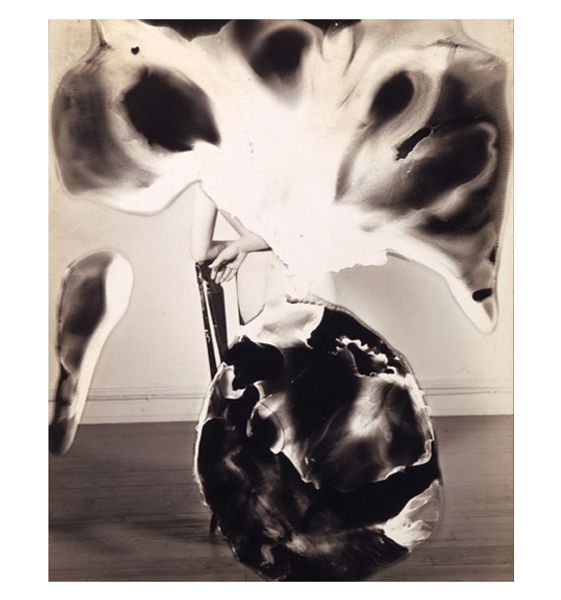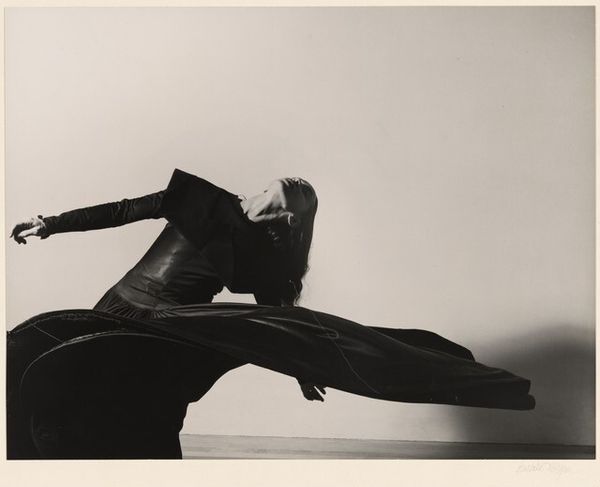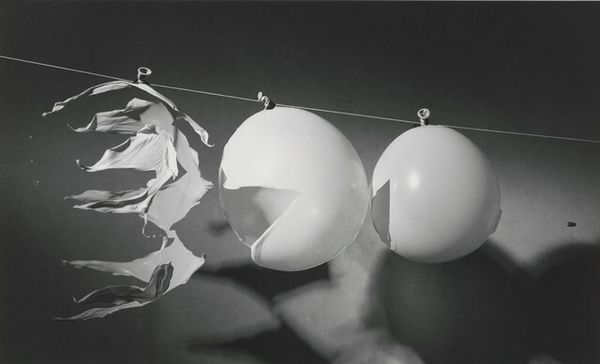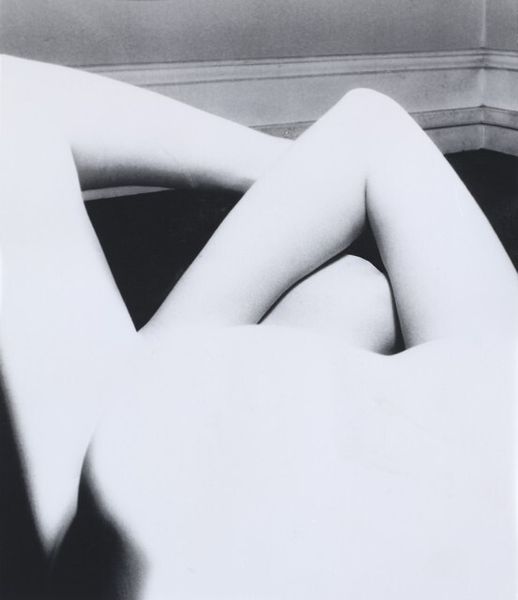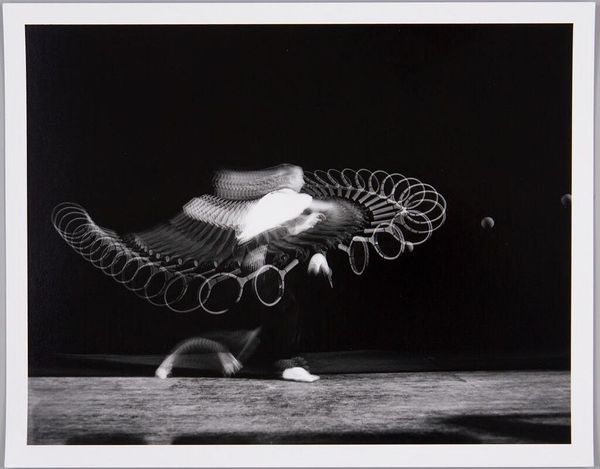
photography
#
portrait
#
contemporary
#
conceptual-art
#
futuristic
#
photography
#
body-art
#
black and white theme
#
monochrome
#
surrealism
Dimensions: image/sheet: 211.46 × 120.02 cm (83 1/4 × 47 1/4 in.) framed: 226.06 × 134.62 × 2.22 cm (89 × 53 × 7/8 in.)
Copyright: National Gallery of Art: CC0 1.0
Curator: At first glance, this black and white photograph, "Walking Camera I (Jimmy the Camera)," from 1987, projects a rather unsettling mood. Editor: Unsettling is right. The stark contrast and the slightly tilted composition contribute to a sense of unease, as if reality is skewed. What strikes me first is the odd juxtaposition of human legs emerging from what appears to be an oversized, antiquated camera. Curator: Indeed. Laurie Simmons seems to be commenting on the mechanization of perception. We see this play between the organic and inorganic—flesh and metal, creating a hybrid that's both humorous and slightly grotesque. The image presents a unique perspective on the role of technology in shaping how we view ourselves and the world. What kind of labor went into making the materials? Where was it consumed? Who is this image for? Editor: I’m intrigued by the form itself. The heavy camera body perches precariously on those slender legs. It’s as if Simmons is questioning the very structure of the photographic apparatus. It seems quite unstable, and thus symbolic in many ways. How solid is our visual documentation of life? What biases do these forms inevitably entail? Curator: The question of visibility is key. Note the angle, placing the viewer in a position of surveillance, potentially critiquing how photography historically held power over its subjects by commodifying images and freezing people, moments, and communities into exploitable resources. Editor: Precisely. The surreal blending of human and machine prompts a deeper questioning of the photographic process, too. The human element, or rather its bizarre adaptation, reveals our dependency on these tools of mediation. Curator: These works force us to confront the material circumstances around the labor, class, and resources that enable art practices such as photography, and what their role in our society actually is. Editor: Agreed. Simmons masterfully challenges our preconceived notions about photography as objective documentation. This strange dance of form and function offers layers of interpretation that stay with you long after viewing. Curator: And that uneasy resonance reveals more about the means and consumption of photography. Editor: A clever subversion realized in compellingly odd composition.
Comments
No comments
Be the first to comment and join the conversation on the ultimate creative platform.

